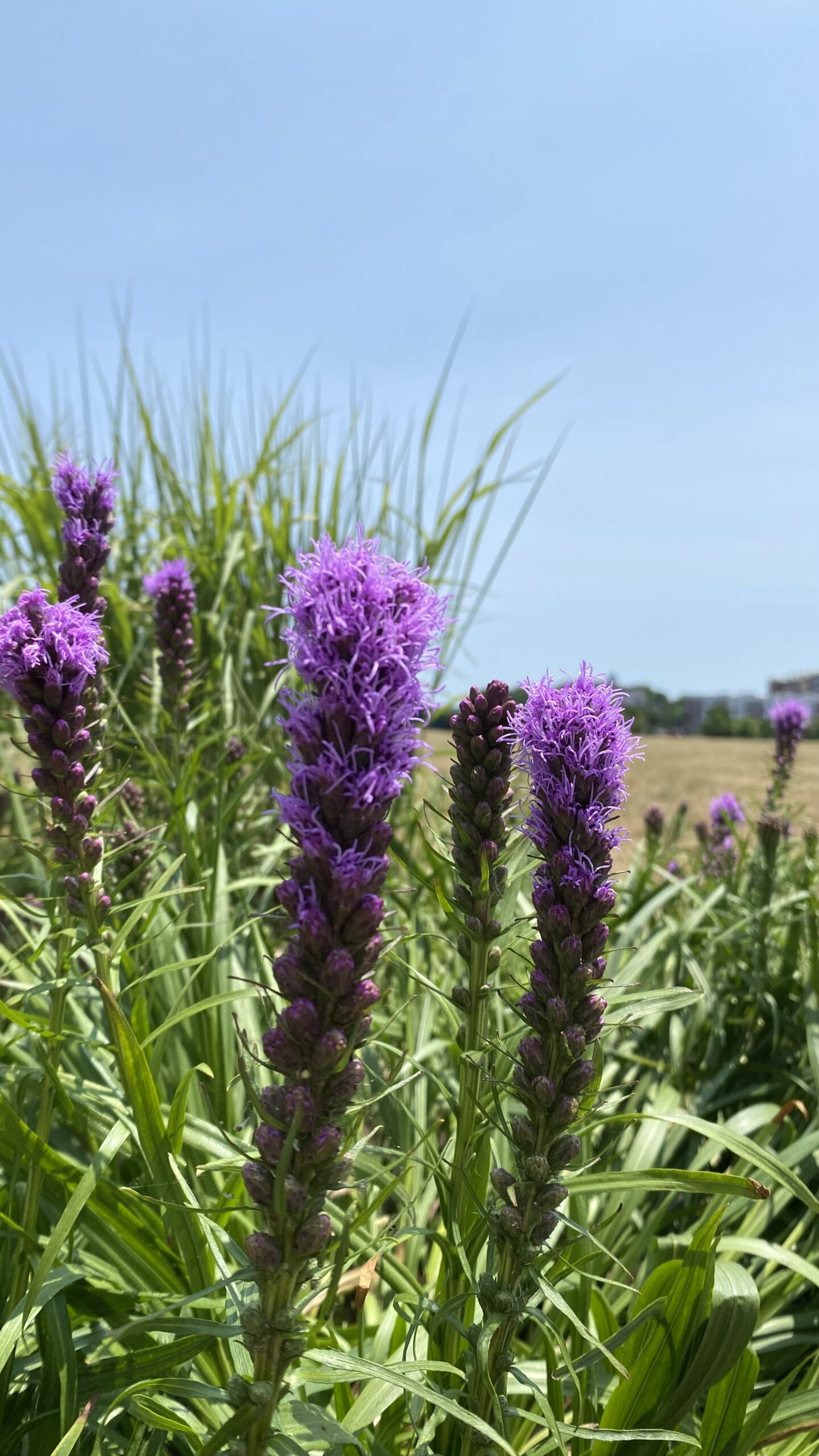
Native Plant Glossary A-Z
Achene: a type of dry fruit that doesn’t open to release the seeds at maturity, and usually produces only one seed per fruit (this makes it an indehiscent fruit) . Examples include the “seeds” on the exterior of a strawberry, or the airborne fruits of dandelions.
Acute: the leaf tip is sharply pointed
Aggregate fruit: A fruit which develops from several ovaries which were originally separated in a singular flower. Examples include raspberries, blackberries, and mulberries.
Allelopathy: allelopathic plants produce toxins which are released through the roots and inhibit the development of plants nearby. Allelopathy can be positive or negative.
Alternate leaves: leaves that originate from different buds in the stem rather than growing parallel to one another – their placement alternates.
Apex: the tip of the leaf furthest from the stem
Arthropod: invertebrates with an exoskeleton of chitin.The phylum Arthropoda includes classes like insecta and arachnida.
Axil: the space created at the angle between the stem and the petiole (thin “stem” attaching the leaf to the actual main plant stem).
Broad-leaf: Leaves that have flat, broad surfaces as opposed to grasses that are long and narrow.
Capsule: a simple dry fruit. The majority opens when mature to release the seeds (this makes it a dehiscent fruit)
Cymes: a type of inflorescence (arrangement) where flowers bloom in a particular order where the one in the center is the first one to bloom followed by the others, examples include Russian comfrey and wood forget-me-not.
Dehiscent fruit: opens when matures and releases the seeds
Dioecious: female flowers and male flowers are on separate individual plants
Drupe: a simple fruit that has a fleshy edible part surrounding a hard part that contains usually a single seed. Sometimes the seed is edible. Examples are peaches, cherries, almonds, coconuts.
Elliptic leaf: looks like an ellipse, twice as long as broad, with the widest part of the leaf near the middle
Facultative (FAC): Occur in wetlands and non-wetlands
Facultative Upland (FACU): Usually occur in non-wetlands, but may occur in wetlands
Facultative Wetland (FACW): Usually occur in wetlands, but may occur in non-wetlands
Female flower: is formed by the ovary, style and stigmatic.
Follicle: is a dry dehiscent fruit with usually 2 seeds. Ex; milkweed and peony
Humusy soil: soil rich in humus
Lanceolate leaf: Long, wider in the middle, shaped like a lance tip.
Leaflets: leaf like organ that is part ofa compound leaf.
Male flower: a flower that has the androecium, a group of stamens that varies in number according to each plant. The stamen is composed by the filament and the anther. The anther produces the pollen
Marginal teeth: serrations on the margins of the leaves.
Monoecious: separate male and female flowers that both bloom on the same plant
Obligate (OBL): Almost always occur in wetlands
Oblong leaf: rounded at each end with parallel sides
Obovate leaf: teardrop-shaped, stem attaches to the tapering end; reversed ovate
Opposite leaves: leaves are paired at a node and borne opposite to each other
Oval leaf: egg shape leaf,
Ovate leaf: egg shaped leaf symmetrically only in the main rib plane
Perfect flowers: flowers that have pistil (female part) and stamen (male part). Both sexes are within the same flower. (Also called bisexual flowers due to having both male and female components)
Pinnately compound leaf: divided into smaller leaflets, with those leaflets arranged on each side of the leaf’s central stalk/rachis (axis) . Examples include the leaves of royal poinciana, ash, pecan, and walnut trees.
Pubescent: hairyleaf surface
Pyramidal: resembling the shape of a pyramid, broader base and narrow towards the apex (tip)
Raceme: type of inflorescence where multiple flowers originate from the same stem. The ones in the bottom bloom earlier followed by the upper ones closer until the last ones that bloom are the ones in the top.
Sepals: flower part under the petals. It can be green (most common) or another color.
Simple leaf: leaf is a whole (no division)
Upland (UPL): Almost never occur in wetlands
Whorls: a group of minimum of 3 concentric leaves or flower parts.
Co-authored by Adrian Hagarty & Monica Marcelli (2023)
